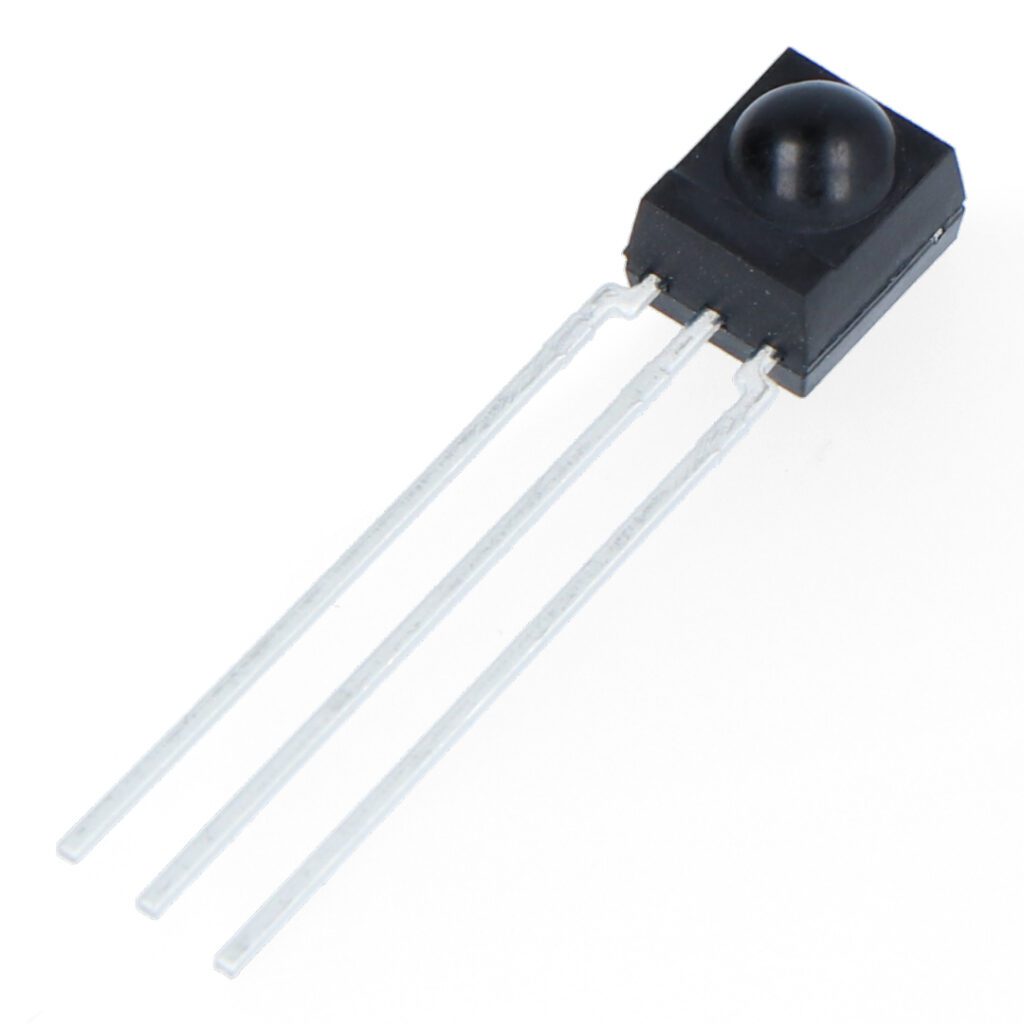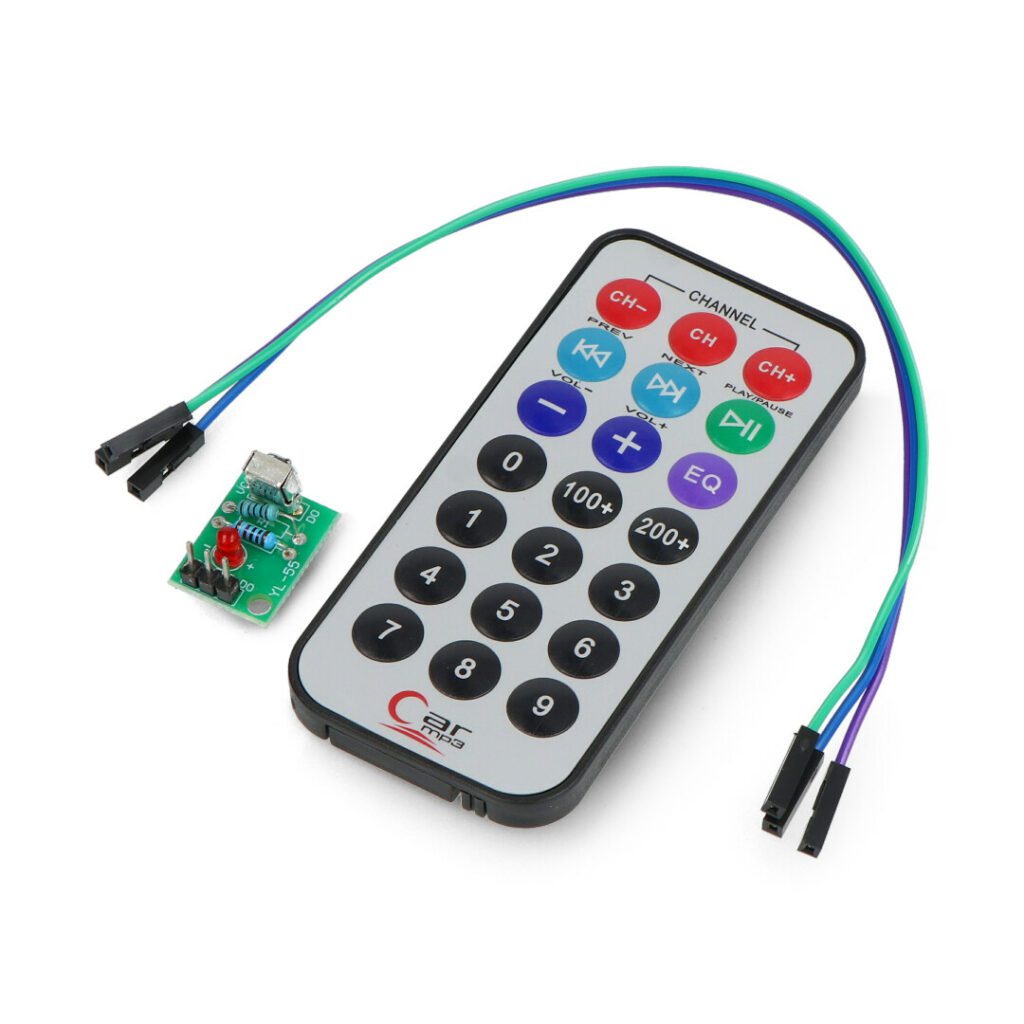Table of Contents:
An infrared receiver is an indispensable component of many modern electronic devices. Its presence significantly facilitates everyday life. In this article we explain what this component is, how it works and why it is so important in today’s technologies. We invite you to discover the fascinating world of infrared receivers!
Infrared receiver - basic information
An infrared receiver, an integral part of infrared wave technology, is a device that translates these waves into signals that can be used to control various devices. The definition of an infrared receiver is therefore quite simple: it is a device that receives infrared signals.
The operation of an infrared receiver is based on the process of converting an infrared wave into an electrical signal. The essence of the operation is to receive an infrared signal, which is then converted into information that can be understood by the device to which it is directed. This process involves several steps:
- Infrared signal reception – the signal is first received by a special sensor capable of recording infrared waves;
- Signal processing – the received signal is then processed by an electronic circuit into a signal understandable to the receiving device;
- signal interpretation – ultimately, the signal is interpreted by the receiving device, leading it to take a specific action, such as changing the TV channel or adjusting the volume.
The primary purpose of the infrared receiver is to enable wireless communication between various devices, and its wide applications range from TV remote controls to security systems.
History and development of infrared technology
The history and development of infrared technology is undoubtedly fascinating. The first concepts of using infrared radiation appeared as early as the 19th century, although practical applications such as the infrared receiver began to develop much later. Initially, this technology was used mainly in the field of astronomy, and there was no awareness yet of its potential applications in everyday life.
An important moment in history was the discovery of the possibility of using infrared waves for data transmission. Over time, the technology began to gain popularity and soon became inextricably linked to many consumer devices, such as televisions, audio systems and many others.
The infrared receiver was a key element in this revolution, enabling effective communication between devices. The development of infrared technology has been dynamic over the past decades, and infrared receivers are now a standard component of many devices, from TV remote controls to advanced security systems. This is an ever-evolving field from which more innovative solutions will undoubtedly arise.
Types and types of infrared receivers
When considering different types and types of infrared receivers, it is important to understand that different models perform different functions, and their features can vary widely. Although each infrared receiver is designed to receive and process infrared waves, it is important to remember that they differ in terms of specifications, applications and complexity of technology.
The first type is infrared receivers used in home appliances. They are most commonly seen in remote controls for televisions, air conditioning and audio systems. The second type is infrared receivers used in security systems, where infrared waves are used for motion detection.
Another type is advanced receivers used in scientific research and astronomy. This class of devices can process very precise and complex signals. In the industrial sector, on the other hand, infrared receivers are used in temperature sensors, where infrared waves are used to measure the heat given off by machinery.
It is worth noting that each of these types and types of infrared receivers is structurally and technologically adapted to perform specific functions, and the choice of the appropriate model depends on the specific need.
Use of infrared receivers in devices
With an infrared receiver, a number of devices gain greater functionality and convenience of use. One of the most common applications of this technology is TV remote controls. Infrared waves allow wireless control of the TV – from changing channels, to adjusting the volume, to turning the device on and off. With an infrared receiver, the TV is able to read and interpret the signals sent by the remote control.
Another popular application of an infrared receiver is in home air conditioning and heating systems. Again, infrared signals are sent via remote control, and a receiver located in the unit reads these signals and executes the appropriate commands.
The same goes for audio equipment such as stereos and DVD players.
The most popular devices that use infrared receivers are:
- TVs – to control TV functions with the remote control;
- Air conditioning and heating systems – to regulate room temperature;
- audio systems – to control the playback of music or movies;
- computers and smartphones – to control various functions of the device, such as slideshow control during a presentation.
The infrared receiver plays a key role in these and many other devices, enabling efficient and convenient communication between devices.
How to choose an infrared receiver for your needs?
Choosing the right infrared receiver can be a key element in ensuring maximum performance and functionality of our devices. The first criterion to consider is to understand the specific application for which the device is needed. As mentioned earlier, different types of infrared receivers are tailored to meet specific functions – from televisions and audio systems, to air conditioning systems, to advanced security systems or scientific equipment.
You should also pay attention to the technical specifications of the infrared receiver, such as the frequency range, sensitivity and range of the receiver – these parameters can be important depending on the specific application. Another important criterion is compatibility with our device – let’s make sure that the infrared receiver we choose works with our devices and is able to read and translate the signals they send. And finally, consider the brand and price of the device – sometimes it’s worth investing a little more to ensure performance and reliability for years to come.
The future of infrared receivers
The future of infrared receivers is full of potential and possibilities. Today’s technological innovations point to increasingly advanced and effective applications of this technology. We can expect the development of technologies that enable even greater precision and speed of data transmission, which will certainly expand their applications in various fields.
The infrared receiver will certainly have a key role in the future of wireless technology. Innovations may include the development of communication over longer distances, while maintaining current levels of security and reliability. The future of this technology is sure to bring exciting new possibilities and solutions.
How useful was this post?
Click on a star to rate it!
Average rating 5 / 5. Vote count: 2
No votes so far! Be the first to rate this post.





















